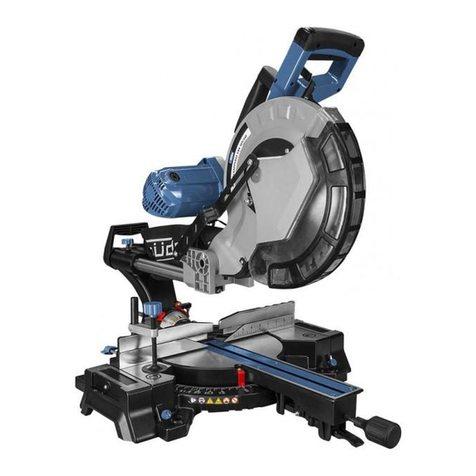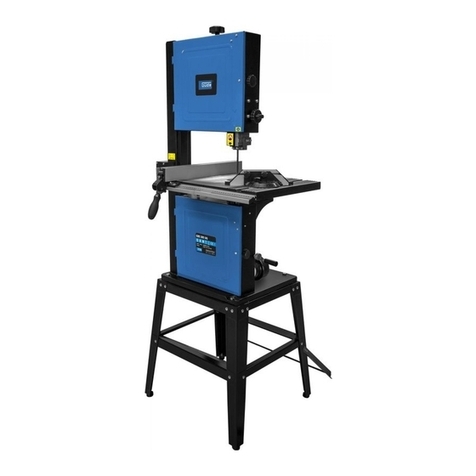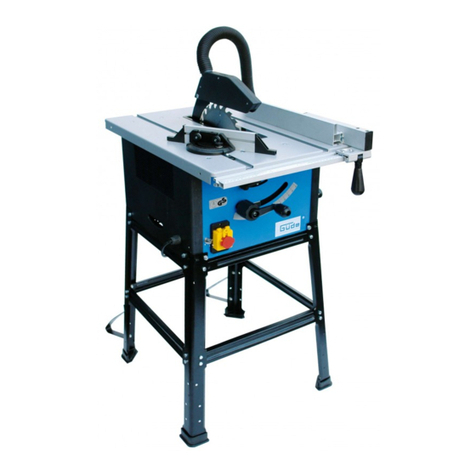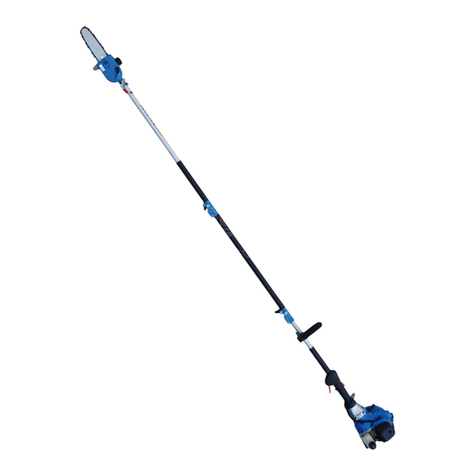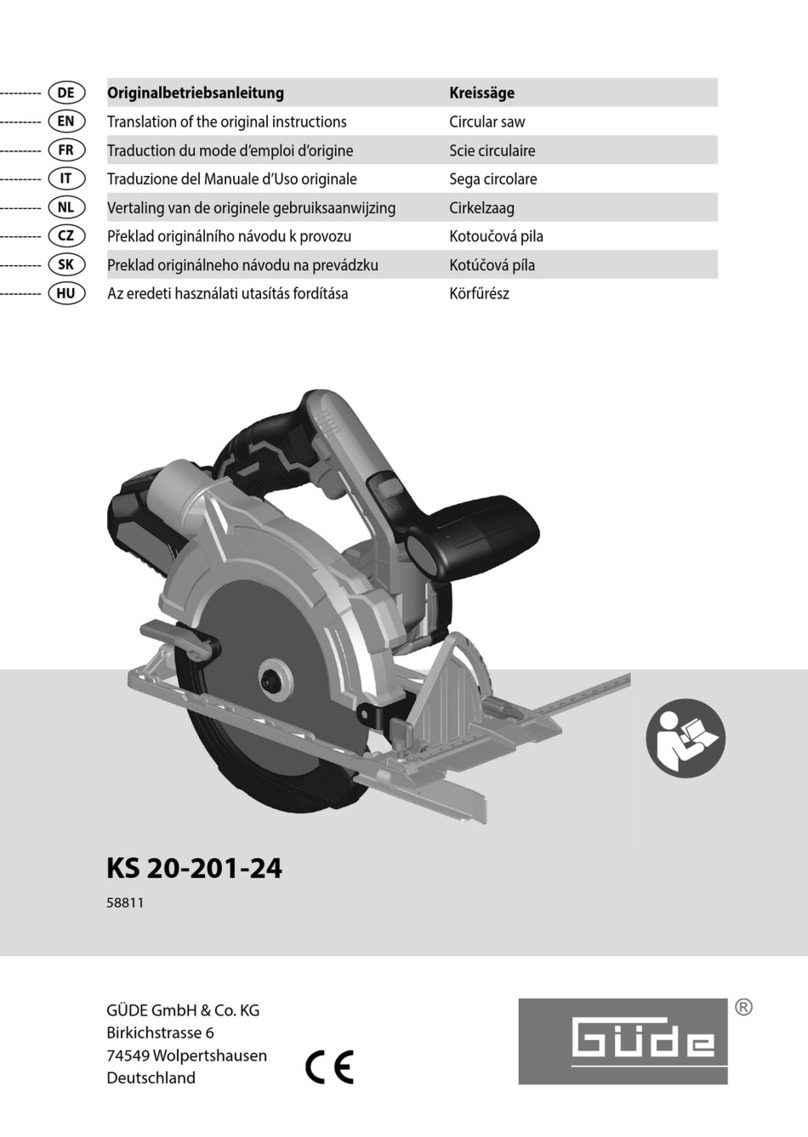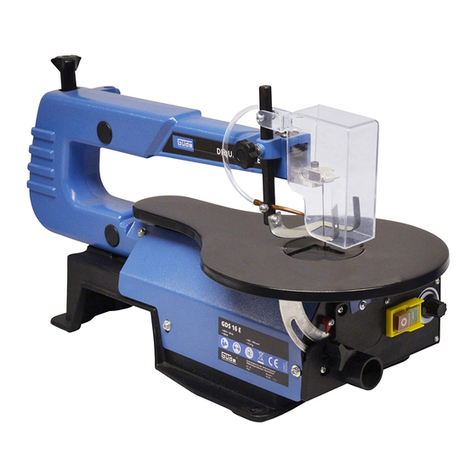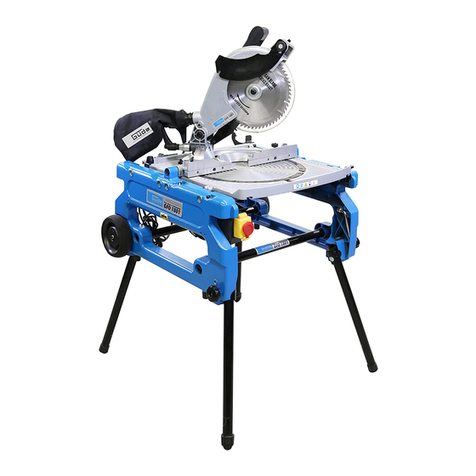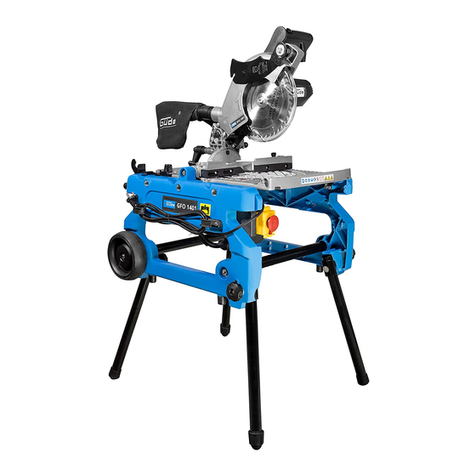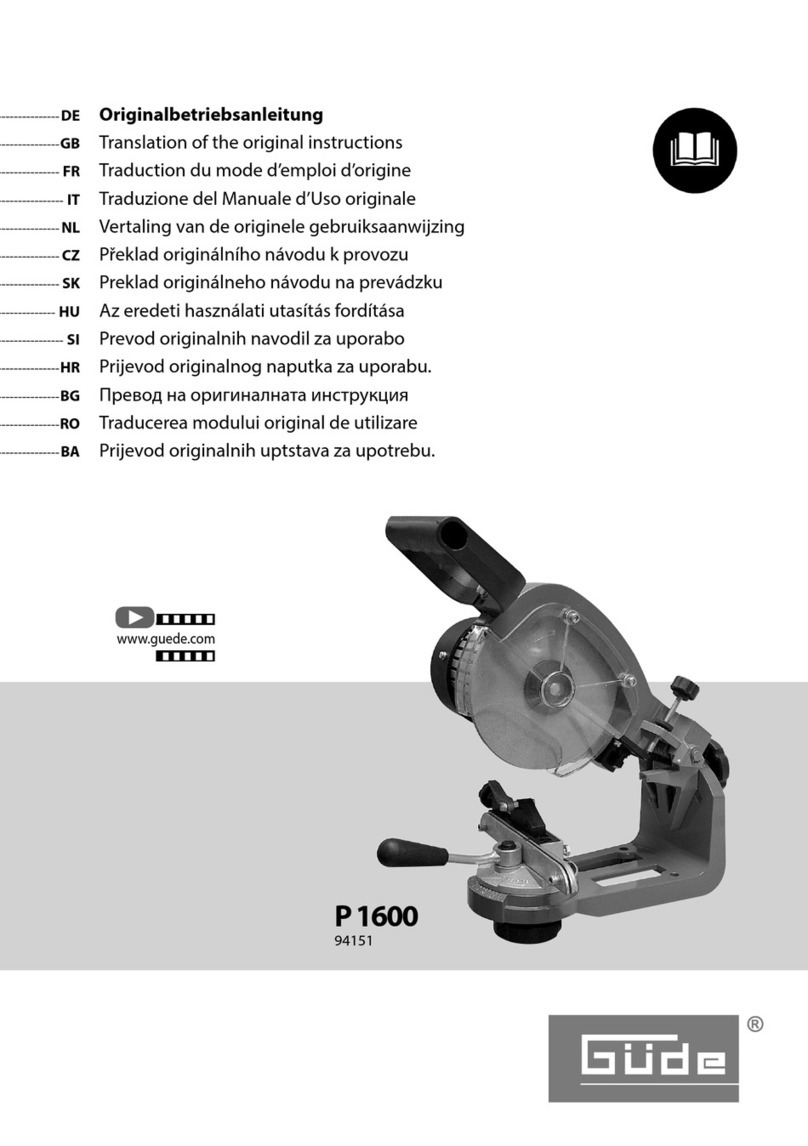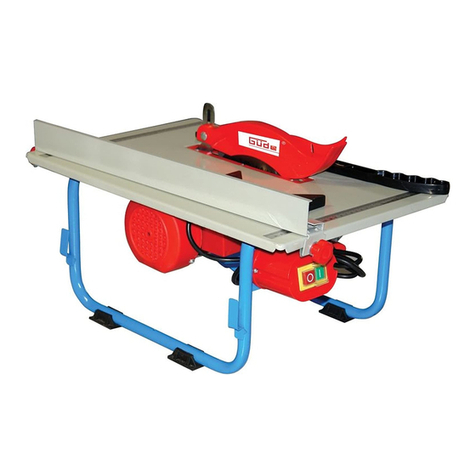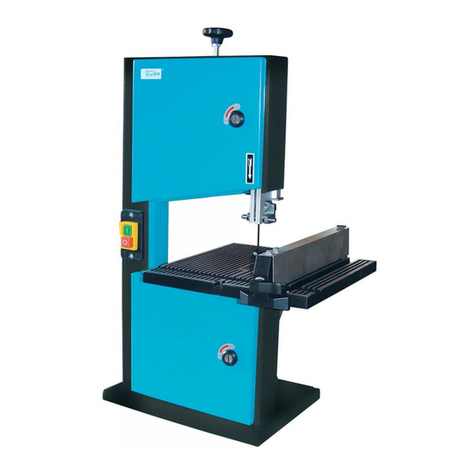
General Safety Instructions
Prior to the initial use of the unit, the operating instructions should be read completely. If in doubt with regard to connection and
operation of the unit, consult the manufacturer (servicing department).
FOLLOW THE INSTRUCTIONS BELOW CAREFULLY IN ORDER TO SECURE A HIGH DEGREE OF SAFETY:
Caution: Always operate with an RCD (faulty current protection switch)!
CAUTION!
•Keep your workplace clean and tidy. Disorder at the worksite and bench increases the risk of accidents and injuries.
•Mind the conditions you work in. Never use electric tools in rainy weather. Never use the electric tools in moist and wet
surroundings. Provide for good lighting. Do not use the electric tools in the proximity of flammable liquids and gases. Do not
expose the electrical tools to rain or high air humidity.
•Do not let other persons access the unit. Visitors and watchers, children and sick or inform persons should be kept at a safe
distance from your workplace.
•Provide for safe storage of the tools. The tools out of use should be stored at a dry elevated place and lock them not to be
accessed by the others.
•Use the correct tool for corresponding job. For example, do not use small tools and accessories for the jobs that should be
done by the big ones. Do not use the tools for purposes and works, which they have not been designed for. Keep your tools
clean and sharp.
•Wear suitable clothing. Do not wear loose clothing or jewellery, they could be caught with moving parts. When working
outdoors, rubber gloves and antiskid boots are recommended. If your hair is long, protective hairnet should be worn.
•Use personal protection equipment. Wear protective goggles and ear protectors. Wear a dustproof respirator. Always wear
tight-fitting gloves when handling sharp edges and saw discs.
•Use a dust exhauster. If dust exhaust and collection of dust devices are available, the must be fitted on and used correctly.
Make sure the dust and sawdust are taken away from you and the others standing near the unit.
•Look out for power cable. Do not pull the cable. Do not use it to unplug. Keep the cable away from the sources of heat, oil and
sharp edges.
•Effect the safety of the piece to be worked. Use suitable clamps etc. It is always better and safer than to hold it with hand. In
addition, you have both your hands free to work. .
•Mind your balance and safe posture. Never lean over too far to the side when you are trying to reach something.
•Remove any wrenches and spanners. All the wrenches and spanners used for replacing a tool, should be removed before
switching off.
•Avoid any unintentional switching on. Before plugging the unit, remember to switch it off by the unit switch.
•When working outdoors, use special extension cables only. You need special extension cables for the use outdoors, they
are fit to the purpose and marked appropriately.
•Be attentive at any time. Mind what you are doing. Use common sense at work. Do not use electrical tools when you feel
tired.
•Look out for damaged parts. Check the unit through before use. Are any parts damaged? If the damage is slight only,
consider if the operation of the unit will still be safe and perfect. Mind the correct adjustment and setting of moving parts. Do
some elements fail to fit correctly in the others? Are some of them damaged? Is everything installed properly? Are any other
conditions of the unit perfect functioning met? Any damaged protective devices etc. have to be repaired or replaced by
authorised serviceman, unless otherwise stated in the operating manual. Have the defective switches replaced in an authorised
workshop. Do not use the tool, if the switch cannot be put on and off as appropriate. Replace the bench inset, if worn. In an
unlikely case that defects are found on the unit (protective devices and saw disc included), kindly consult a local servicing centre.
•Get protected from electric shock. Avoid any contact of the body with grounded parts, such as pipes,
heating radiators, stoves, and refrigerators.
•Use approved parts only. Use identical spare parts only for maintenance and repairs. Consult an authorised servicing centre.
•Warning! Use of accessories and additions other than expressly recommended in this manual may result in a risk for persons
and property.
•Caution: Use a sliding guide bar at any work.
•Take care of your machine. Keep the cutting tools sharp and clean – you will work better and safer. Follow the tool change and
lubrication instructions. At regular intervals, check the machine electric cable and have it replaced by an authorised professional
if damaged. At regular intervals, check the extension cables and replace them if damaged. Keep the handles dry, clean, with no
oil and grease.
•Unplug the machine. If the electric tool is not being used, before any servicing and when changing any tool, e.g. circular-saw
blade, drill, cutter.
•Have your electric tools repaired by an electrician. This electric tool corresponds to applicable safety provisions. Any repairs
may only be repaired by an electrician who may only use original spare parts; otherwise, the user may get injured.
Behaviour in case of emergency
Provide necessary first aid treatment corresponding to the injury nature and seek qualified medical help as soon as possible.
Protect the injured person from other injuries and calm him/her down.
First aid kit must always be available in the place of your work in case of accident in accordance with DIN 13164. Material
taken out of the first aid kit needs to be supplemented right away. If help is needed, please provide the following details:
1. Place of accident
2. Accident nature
3. Number of injured persons
4. Injury type
